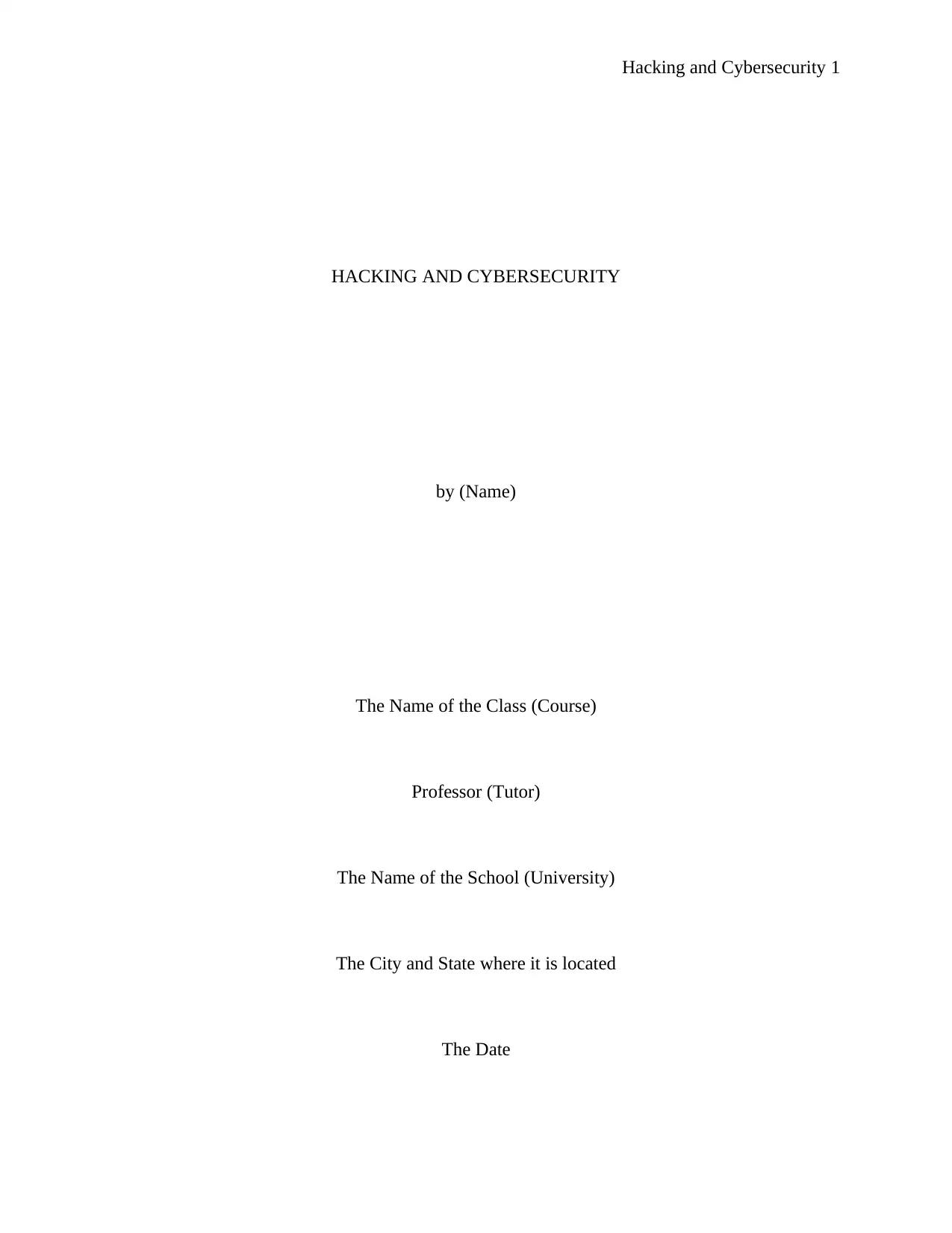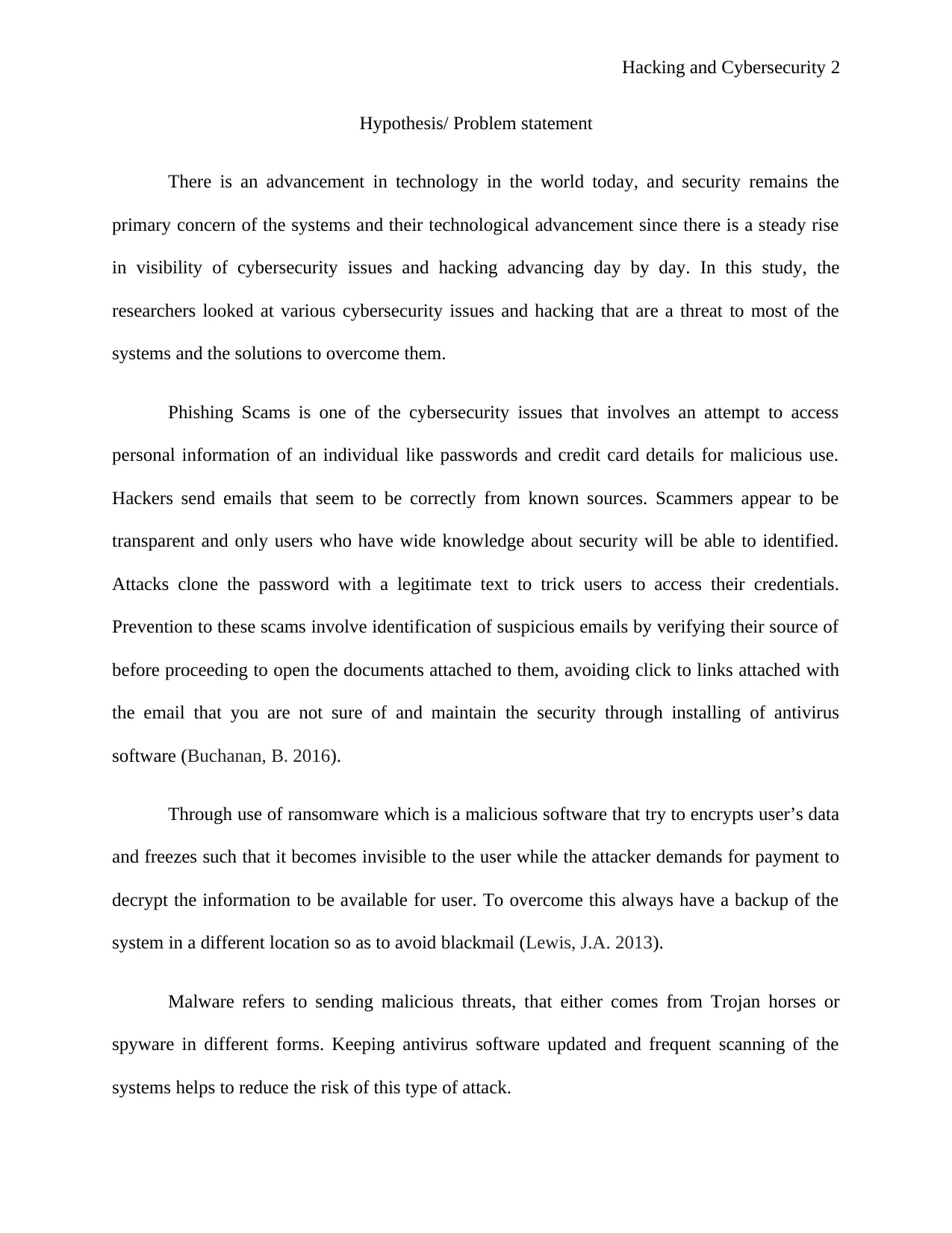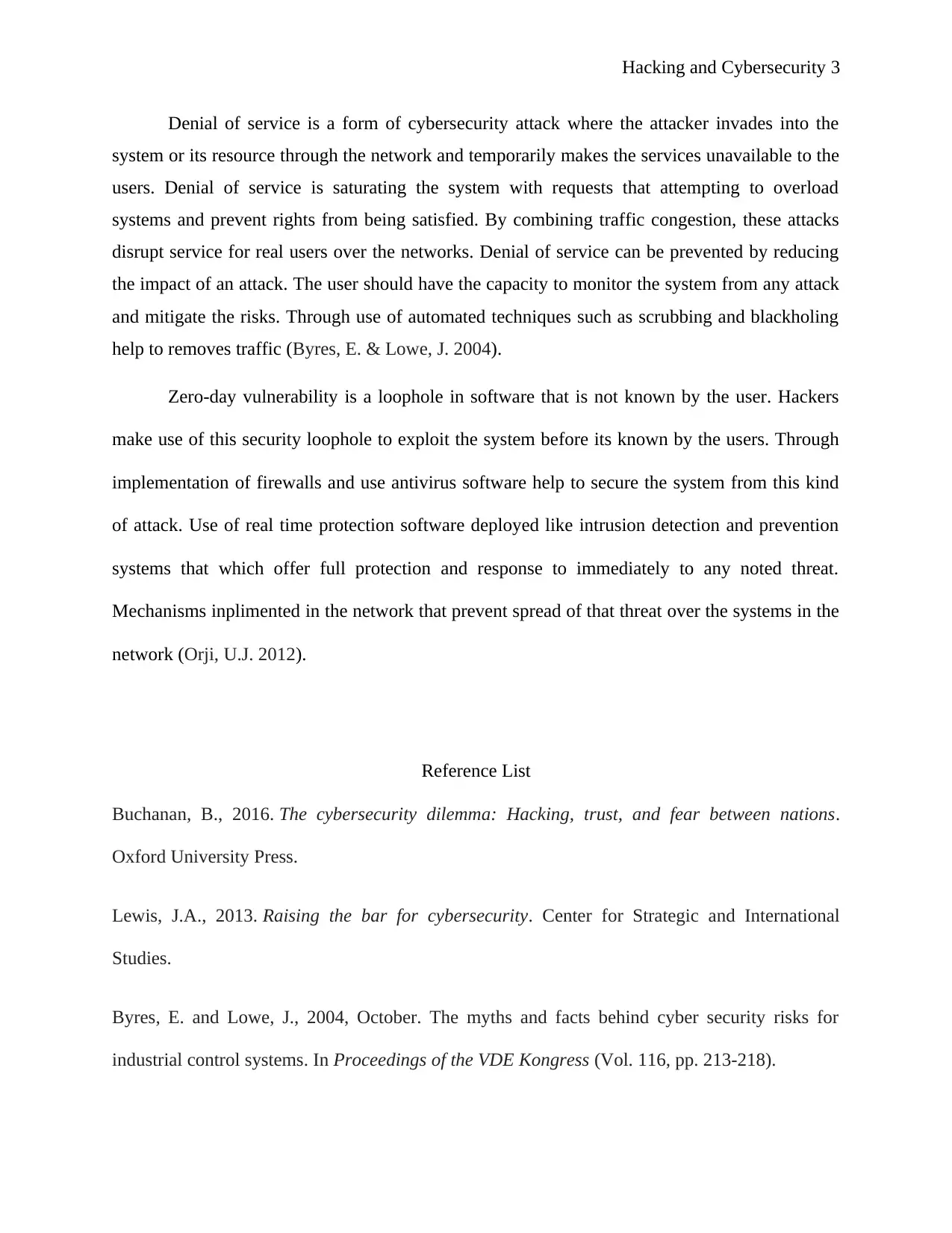Hacking and Cybersecurity Analysis: Threats, Solutions, and Prevention
VerifiedAdded on 2023/02/01
|4
|705
|70
Report
AI Summary
This report delves into the critical domain of hacking and cybersecurity, addressing the increasing threats in today's technologically advanced world. It begins by identifying the core problem: the rise of cybersecurity issues and hacking. The report then explores several specific threats, including phishing scams, ransomware, malware, denial of service attacks, and zero-day vulnerabilities. For each threat, the report provides a detailed explanation and discusses effective prevention and mitigation strategies. For instance, it suggests identifying suspicious emails to prevent phishing scams, backing up systems to counter ransomware, keeping antivirus software updated to combat malware, monitoring systems to mitigate denial of service attacks, and implementing firewalls to prevent zero-day vulnerabilities. The report concludes with a list of references, providing a foundation for further study and research in the field of cybersecurity.
1 out of 4











![[object Object]](/_next/static/media/star-bottom.7253800d.svg)